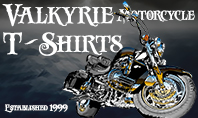In music, a riff is an ostinato figure: a repeated chord progression, pattern, refrain or melodic figure, often played by the rhythm section instruments or solo instrument, that forms the basis or accompaniment of a musical composition. Though they are most often found in rock music, Latin, funk and jazz, classical music is also sometimes based on a simple riff, such as Ravel's Boléro. Riffs can be as simple as a tenor saxophone honking a simple, catchy rhythmic figure, or as complex as the riff-based variations in the head arrangements played by the Count Basie Orchestra.
David Brackett (1999) defines riffs as "short melodic phrases," while Richard Middleton (1999) defines them as, "short rhythmic, melodic, or harmonic figures repeated to form a structural framework." Rikky Rooksby states that "A riff is a short, repeated, memorable musical phrase, often pitched low on the guitar, which focuses much of the energy and excitement of a rock song."
The term riff entered musical slang in the 1920s, and is used primarily in discussion of forms of rock music or jazz. "Most rock musicians use riff as a near-synonym for musical idea."
Charlie Parker's 1945 recording "Thriving on a Riff" brought the term to more popular awareness.
The etymology of the term is not clearly known. Some sources explain riff as an abbreviation for "rhythmic figure" or "refrain". Use of the term has also misleadingly been extended to comedy where riffing is used to mean the verbal exploration of a particular subject, thus moving the meaning away from the original jazz sense of a repeated figure over which the soloist improvises, to instead indicate the improvisation itself: that is, improvising on a melody or progression as one would improvise on a subject by extending a singular thought, idea or inspiration into a bit, or routine.
More recently the term rift has entered usage as a mistaken pronunciation of riff.
In jazz and 'R & B', riffs are often used as the starting point for longer compositions. The "Night Train" riff was first used in Duke Ellington's "Happy-Go-Lucky Local", which Ellington had recycled from Johnny Hodges' earlier "That's the Blues, Old Man".
The riff from Charlie Parker's bebop number "Now's the Time" re-emerged four years later as the R&B dance hit, "The Hucklebuck". The verse of "The Hucklebuck", which was another riff, was "borrowed" from the Artie Matthews composition, "Weary Blues". Glenn Miller's "In the Mood" had an earlier life as Wingy Manone's "Tar Paper Stomp". All these songs use twelve bar blues riffs, and most of these riffs probably precede the examples given.
Neither of the terms riff or lick is used in Classical music instead, individual musical phrases used as the basis of classical music pieces are called ostinatos or simply phrases. Contemporary jazz writers also use riff- or lick-like ostinatos in modal music and Latin jazz.
Some of the Greatest Guitar Riffs in Rock & Roll history...............
Deep Purple - Smoke On The Water
Sunshine Of Your Love - Cream
Eric Clapton - Layla
Black Sabbath Iron Man
Led Zeppelin - Heartbreaker (External Embedding Disabled)
Led Zeppelin - Heartbreaker
Sweet Child O' Mine Guns N' Roses
Jimi Hendrix - Purple Haze
Sweet Home Alabama LYNYRD SKYNYRD
AC/DC - Back In Black
Edgar Winter Group - Frankenstein
Enter Sandman - Metallica
ZZ Top - La Grange
Doobie Brothers - China Grove
Ted Nugent - Stranglehold (Embedding disabled, limit reached)
Ted Nugent - Stranglehold
Rush - Working Man 10-13-2002 (Embedding disabled, limit reached)
Rush - Working Man
I could have listed dozens of songs here but just not time , anyway, enjoy!!!! I love Rock and Roll!!!!!!!!






